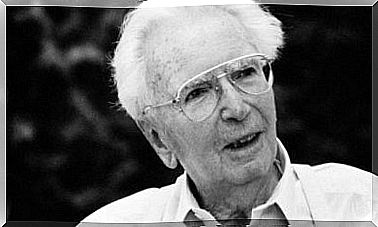What Exactly Is Counseling?

In difficult situations, for example when a child is ill or a family member dies, counseling can help. Viktor Frankl once said it. The attitude is a personal choice. Therapists help their patients with their attitude when they are going through difficult periods.
Viktor Frankl was an Austrian psychiatrist of Jewish descent. He survived three years in concentration camps including Auschwitz and Dachau. After that experience, he wrote several books. He often came to the conclusion that despite everything, there is a reason to live. So one thing psychologists do is ask the right questions. Because they try to find out what the patient believes are his reasons for living. They help him find the light at the end of the tunnel.
Counseling: a relational tool

Psychological counseling consists of making the patient think through questions. That way he can then make the best decision for himself and ultimately for his health. The objective of this guidance is to allow the patient’s level of competence to develop as well as possible while keeping the emotional cost as low as possible. To do this, the therapist will start with three basic attitudes: warmth, presence, and compassion. In addition, the following skills are fundamental:
- Emotional Control: Emotions are natural. Recognizing and accepting them is the first step. In counseling, the therapist will teach the patient how to manage his emotions.
- Effective communication: The therapist should not be authoritarian or paternalistic towards the patient. Because the support has nothing to do with giving orders or overprotecting him. It is about providing autonomy and tools so that he can make decisions and solve problems himself.
- Containment and emotional support: Emotions that surround suffering are strong and varied. However, they should not be stopped, but rather should be recognized and guided.
- Problem solving: a process of making decisions that the patient and therapist perform together.
Counseling: effective communication in four steps
How to create effective communication between the counselor and the patient:
- Take a moment and connect with yourself. Because it is important that the facilitator focuses on the present by focusing on establishing proper breathing. This will give him time to respond properly to the patient.
- Reinforcement means listening to the patient’s emotions and showing empathy. It also means acknowledging the patient’s perspective and making him see that his behavior has a valid reason. Because when he feels accepted and confirmed, the channels of communication open. The counselor may not agree with the patient’s opinions or behavior. But he does understand and acknowledge them. The therapist must also resist the reflex to correct the patient and tell the patient what to do. Instead, he must understand the patient’s needs and concerns. At the same time, he should listen to him and help him take action.
- The next step is the foundation of counseling. The idea is that the professional expert asks open and strategic questions. They help the patient to think and make good decisions. These are some open questions that can make communication easier. What do you know about your illness? What do you want to know about it? How do you feel? How can I help you?
- The dialogue is the means of sharing information and perspectives with the patient. It is very helpful to use constructive criticism and suggest changes. The therapist can begin by describing the problem and expressing the feelings caused by the problematic behavior. Then he can offer alternatives and make one proposal.
The problem-solving model

Finally, the following model of problem solving can help support the patient in making decisions. We divide the model into the following steps:
- Orientation to the problem. This has to do with the attitude the patient adopts when confronted with the problem. This attitude can be avoidance, impulsiveness, being proactive and so on. Once the patient’s attitude has been defined, the therapist encourages a positive attitude. He turns the problem into a challenge and encourages personal growth.
- Accurately pinpoint the problem by examining the perspectives of both the patient and the therapist.
- Look for alternatives. Brainstorming is one way to do this.
- Weigh the pros and cons of each choice made during the brainstorming.
- Choose the option that is most suitable.
- Execute a plan step by step. The phases should be easy and achievable so that the patient does not give up.
- Re-evaluate. Once the chosen plan is implemented, the therapist and patient review how it went. If the problem is improved as a result of a certain behavior, it will be amplified. If not, the next step is for them to think about why this happened and what they can do about it.
The tools we have discussed here are actually designed to encourage the patient to make their own decisions and to feel responsible for their own life. Only then is there a chance that change will occur and that it will last. If the patient is not consulted about what he feels and thinks, and the professional takes the reins over everything, no solution will be sustainable.









